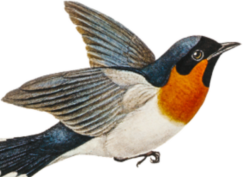I thoroughly enjoyed Dante Gabriel Rossetti’s The Blessed Damozel, particularly because of his use of a gold bar that acts as a barrier between Heaven and Earth in the poem. This symbolic use of a physical bar between life and death made me instantly think of the poem Crossing the Bar by Alfred Tennyson. (We didn’t read this particular poem in class, but we did read other Tennyson poems last week so I’m rolling with it).
Tennyson’s poem is a short one that I highly recommend taking a moment to read; It follows the speaker who is being called into the ocean, which, in this case, is the afterlife. “For thought from out our bourne of Time and Place/ The flood may bear me far” (13-14). The speaker notes that by going into the sea, he will be going to a state beyond time and place, which seems a whole lot like death to me. In order to get to life after death, the speaker must cross a sandbar, which is mentioned twice throughout the poem. Its first mention comes in the very first stanza, “and may there be no moaning of the bar, / When I put out to sea” (3-4). I interpreted the moaning of the bar to mean resistance, or perhaps difficult waters for the sailor to pass over. When it is his time to cross, he hopes for calm waters that are “Too full for sound and foam” (6), which will allow the person to pass over easily. The second mention of the bar comes in the poem’s final line: “I hope to see my Pilot face to face/ When I have crossed the bar.” (15-16). Knowing that a pilot acts as something of a guide, and a person that leads a flight/ journey, perhaps this Pilot in the poem is God or another divine figure the speaker could have viewed as a commanding force during his lifetime.
Rossetti’s golden bar is also established as the clear barrier between life and death from the very first lines of the poem, “Damozel lean’d out/From the gold bar of Heaven” (1-2). The damozel is described to be leaning against this bar twice in the poem, the repetition of this action makes it very clear that she is yearning to move beyond this bar. (Just like how the speaker in Tennyson’s poem looks forward to crossing the bar, so does The Damozel; but her wishes are in vain, because, unlike the sailor, she cannot look forward to crossing the bar from the other side) The fact that she presses herself against this bar so firmly it becomes warm (46) proves that she cannot break through it despite her strong desire to do so. This being said the speaker of the poem has seemingly connected to the Damozel, even separated in death, “she smiled. /(I saw her smile.)” (138-39) The implication that her actions have been communicated to someone means that her longing is not entirely futile.
What I find most interesting about this intersection of symbols, is that both substances that make up these bars are strong, but not fixed. A sandbar, for example, may shift in location or shape, but there will always be one there to guide the waves. Similarly, gold is a strong metal but can be easily shaped and bent as it is a highly malleable solid. Both bars in the poems are made of materials that may shift and change depending on the circumstances. Rossetti’s bar bends as the lovers seem to commune with each other, despite being separated in death “She cast her arms along/ The golden barriers, / And laid her face between her hands, / And wept. (I heard her tears.)” (Rossetti 141-144). Tennyson’s bar seems to be malleable as well as the speaker of the poem wishes that when it is his time to cross, the water over the bar is calm, rather than something that may be more painful to endure; clearly stating that the conditions surrounding the bar vary (after all, not everyone can be met with a painless death). In true poetic nature, both speakers hope that their bar will bend, even if only a little bit, just so that they may experience some relief in their experience with death. I think the bar is used very cleverly in both scenarios, and I found it even more interesting that one speaker is experiencing life before crossing the bar, while the others’ story is told from behind this bar.
